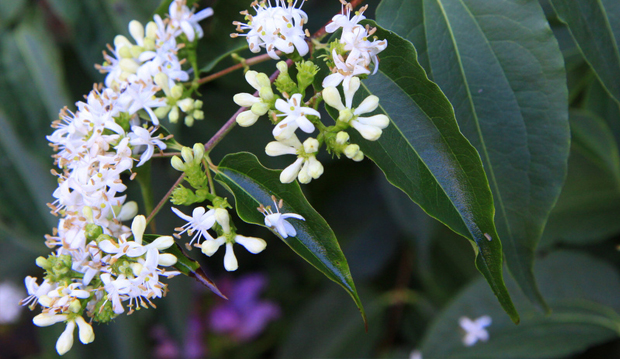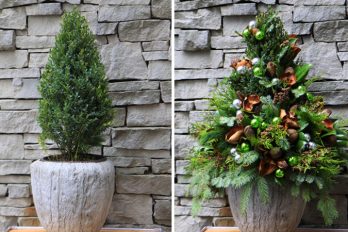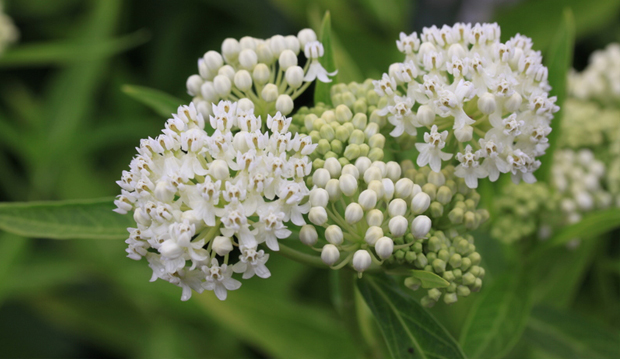This is very special garden specimen (aka Seven Son Flower) that although in cultivation after its discovery in 1907, is sadly very rare in its native environment of central China. Habit loss continues to threaten the remaining limited wild populations.
I consider Heptacodium to be a quick growing, multi-stemmed, large shrub that develops a vase-shaped habit and grows to three metres in height or taller. From my observations, the plant seems very adaptable and is able to grow in a wide range of soil conditions, in both full sun to part shade. I was initially attracted to its thin, tan-colured exfoliating bark, which provides wonderful interest in the garden during our often long Canadian winters. Another bonus is the surprisingly late — and long — bloom period. From the end of summer to fall the growing tips give rise to dense white clusters of sweetly scented blossoms. Just yummy! I recently discovered the clusters of bloom are also suitable for cutting and bringing indoors. Depending on the length of the season, the fading flowers may be followed by a show of red fruit and calyes. Personally, I have not witnessed this second blaze of glory on my home specimen in the five years that I have been growing it. However, my number one reason for growing Heptacodium has to be for the great lure the nectar-rich flowers are to both butterflies and bees. I am often astonished by the fall feeding frenzy. What a wonderful feeling it is to have plants in the garden that not only have multiple seasons of interest, but are also beneficial to so many garden guests.
Last year a young specimen was planted in the new pollinator garden, where our honeybees can also be observed building up food reserves to get them through the winter. You can look out and see the shrub in flower from the Weston Family Library, or the upper link leading into the Moriyama Foyer.





Comments are closed.